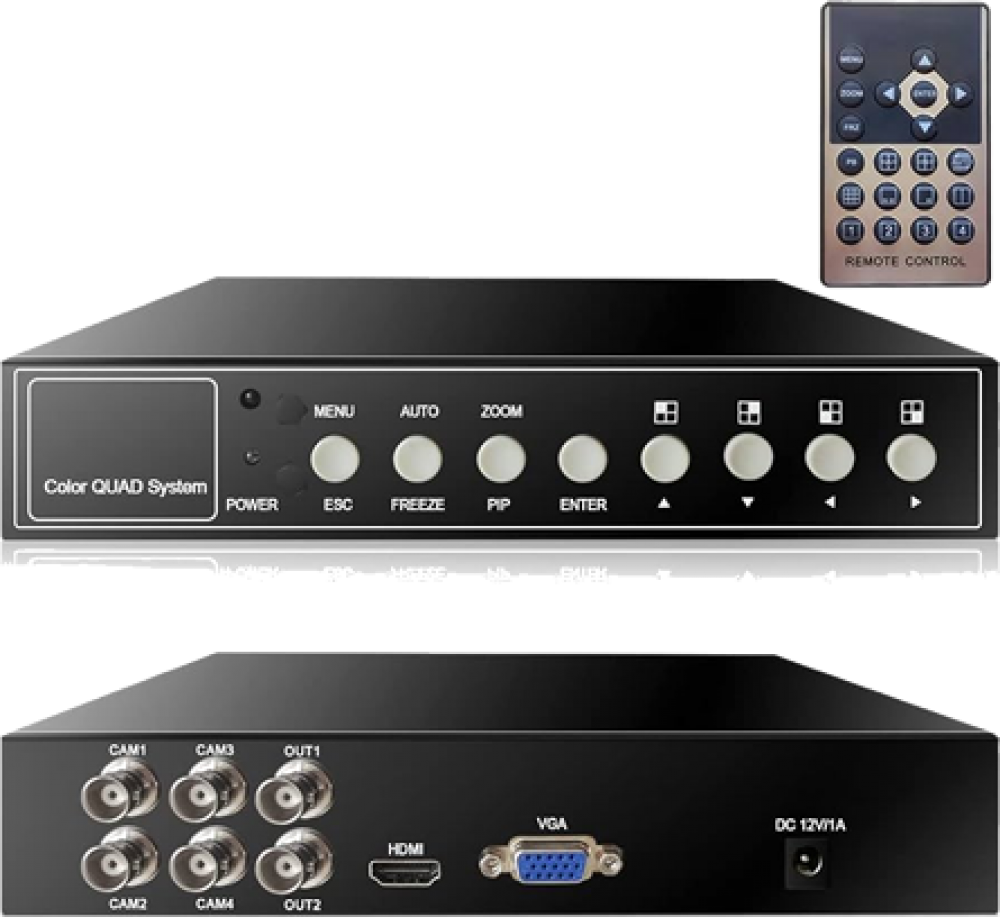Chapter 3.5 Switchers And Multiplexers - CCTV Technology Fundamentals

Posted by Arowosegbe Olawale in General
Switchers and multiplexers are used to route the video signal in CCTV systems with more cameras than monitors and recording devices. In comparison to multiplexers, switches have a less complex design. It is possible to program them to send analog or digital video to a monitor or recorder automatically or manually. Some switchers have the ability to sequentially send frames or fields from multiple cameras to a recorder. This allows for each camera's footage to be recorded in order.
Unlike switchers, which have been around since the 1960s, multiplexers were invented in the 1980s. In order to convert the analog video from multiple cameras into a digital signal, multiplexers are used. Multiplexers can be set up with rules that prioritize certain camera feeds over others. In an integrated security system, the cameras monitoring the alarmed areas may be given preference so that their feeds are displayed on a screen and all frames are recorded. In order to only record or display an image when motion or some other phenomenon is detected, many multiplexers incorporate motion detection and analysis software.
In computer-managed networks, many multiplexers may be used. Combining this adaptability with digital storage media in place of tape storage systems, the line between multiplexers and other components like DVRs and NVRs becomes increasingly blurred (NVRs). Both DVRs and NVRs can function as multiplexers, but they also have built-in hard drive storage to record video in compressed digital format. Section 3.6 expands on the discussion of DVRs and NVRs.
Switchers and multiplexers aren't needed in network-camera-based, digital video systems. Over Ethernet or some other electronic data network, the cameras transmit compressed digital video data directly to the DVRs or monitors. Switchers and multiplexers provide an inexpensive and straightforward alternative to the increasingly commonplace digital imaging and digital storage devices.
3.5.1 Switchers
Switches are conceptually simpler than multiplexers. They can be manually or automatically configured to transmit analogue video or a television signal to a monitor or recorder. Some switchers can sequentially transmit images from multiple cameras to a recorder, recording an image from each camera in turn.
The number of cameras and monitors used, as well as how the monitors will display the video, have a significant impact on the choice of switcher. Manual and sequential switchers are the simplest and most common devices utilized in small CCTV systems. Most switchers allow the CCTV system to be expanded as new requirements are identified.
CCTV systems with numerous components require switchers based on microprocessors that can manage numerous video inputs and outputs. These devices are called matrix switchers.
3.5.2 Multiplexers
Frame, image, and field recording are the primary functions of multiplexers. Multiplexers allow security personnel to set rules for how to prioritize the video from various cameras. In an integrated security system, the cameras covering the alarmed areas may be prioritized so that their feeds are displayed on a monitor and all footage is recorded. Motion detection and analysis software is built into some multiplexers, allowing the image to be recorded or displayed only when it detects motion or other phenomena.
Multiplexers are useful in computer and server-controlled networks. The line between multiplexers and digital video recorders becomes fuzzier when this adaptability is combined with digital storage media. DVRs not only act as multiplexers, but also have built-in hard drive storage to record prioritized video as compressed digital data.
3.5.3 Multiplexers Networks
Connecting multiple multiplexers through a multiplexer server allows for the creation of systems with the capacity to process a large number of video input sources and outputs to monitors and recorders. By connecting the multiplexers, a full system with multiple screens can be run. Complex sequencing tasks are within the capabilities of these networks.
By connecting a server to multiplexers and adding a hard drive, the system's functionality can come close to that of a digital video recorder (DVR). Before discounting the purchase of a DVR, it is prudent to carefully consider the cost of multiplexers and associated components.
